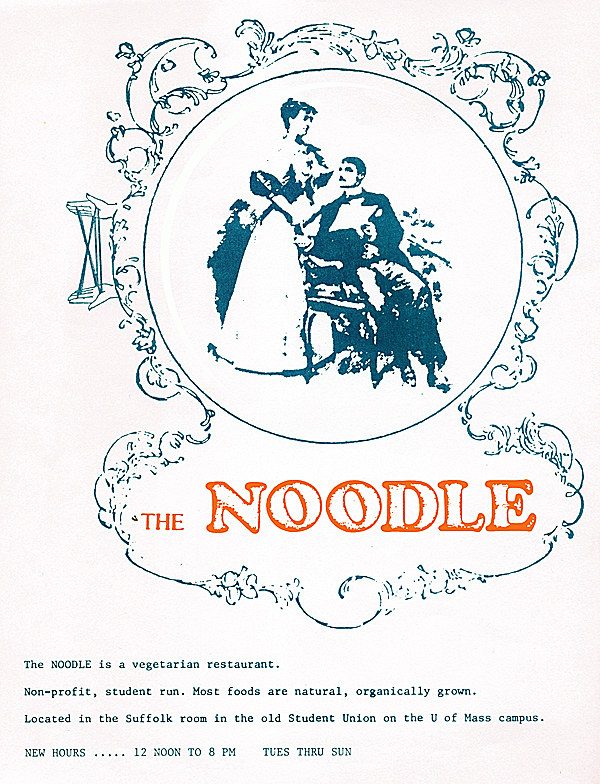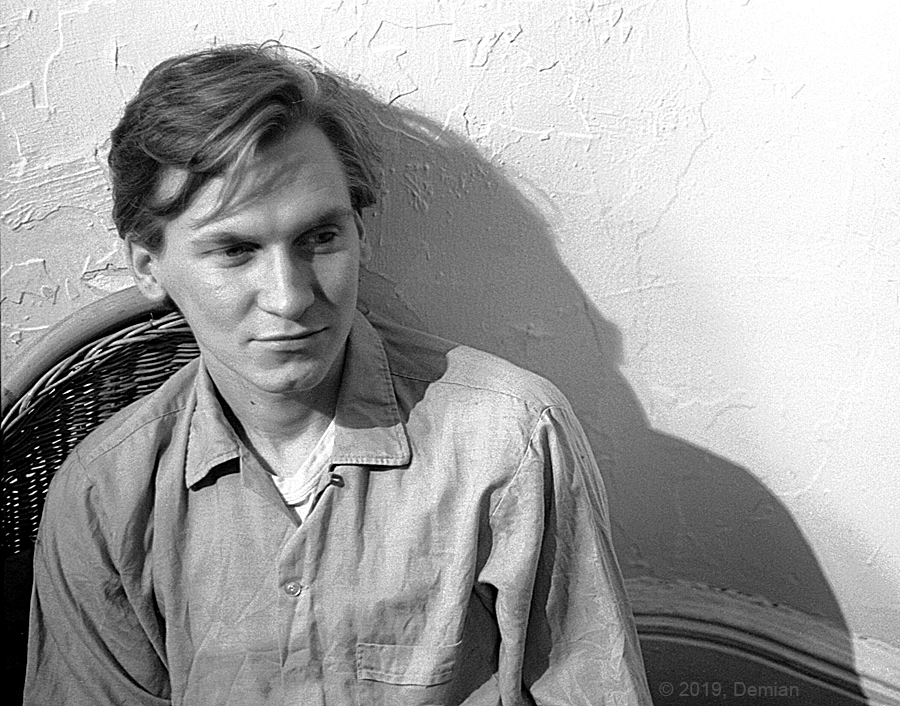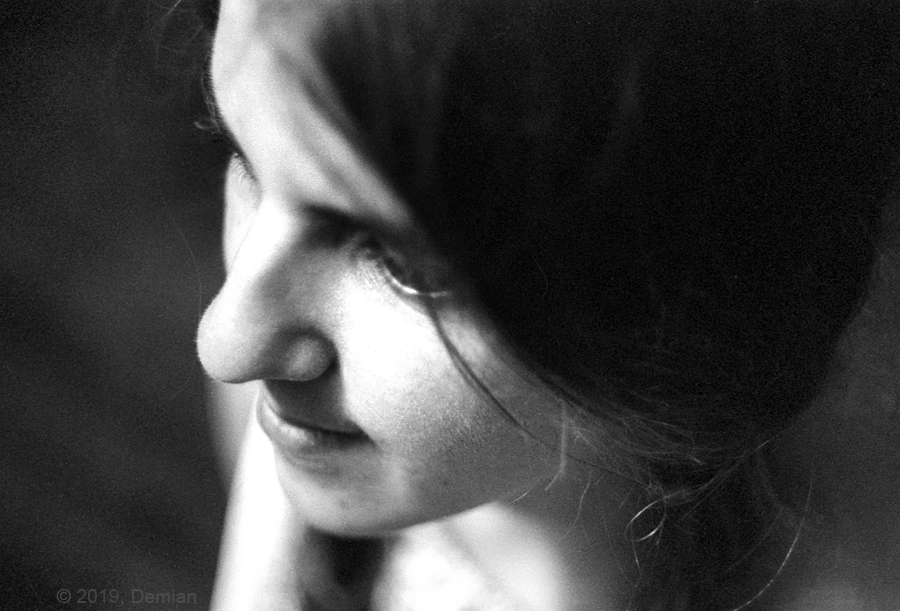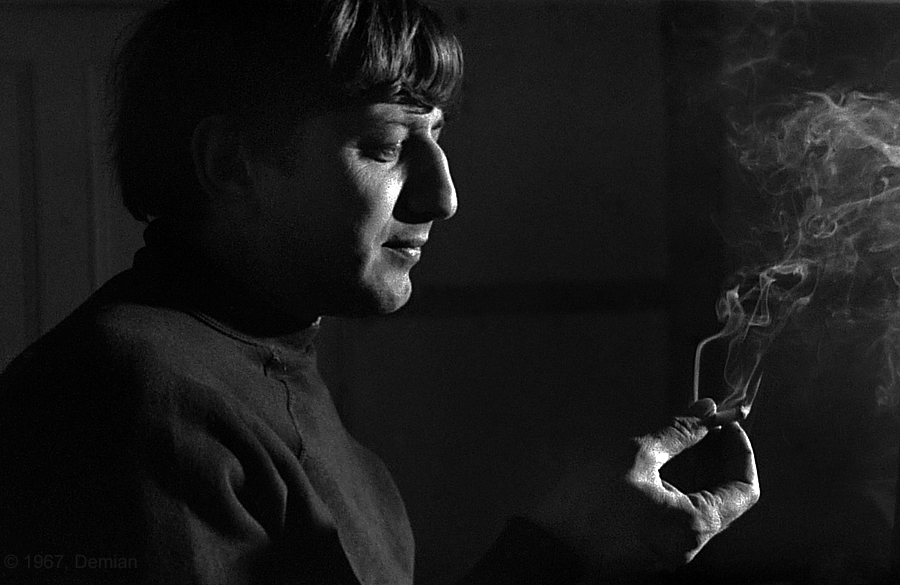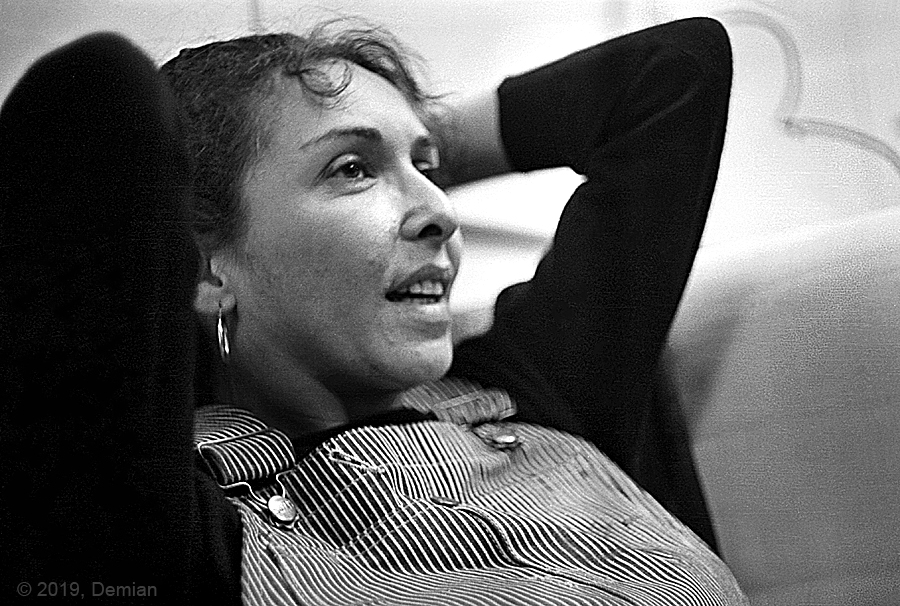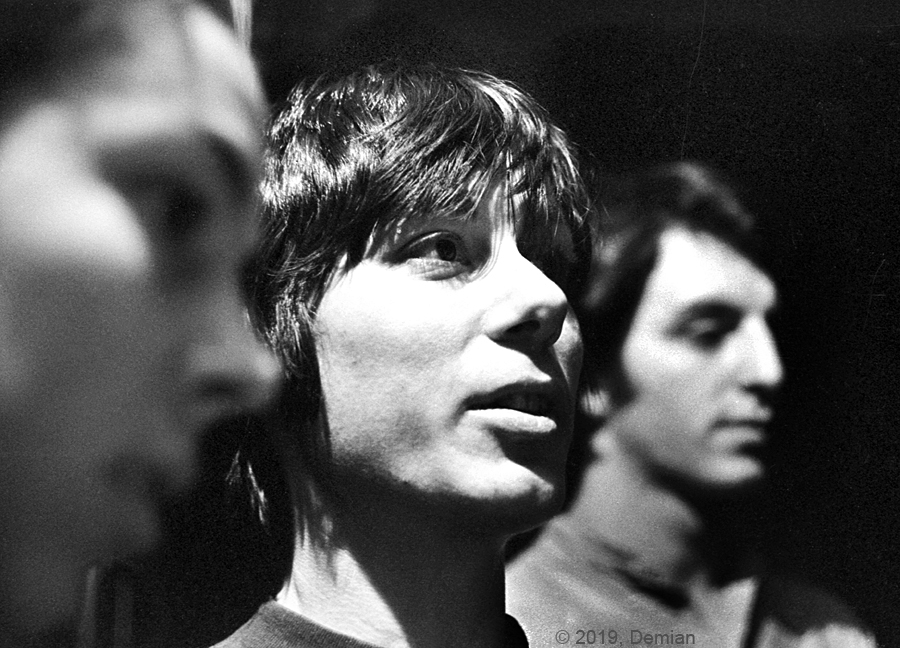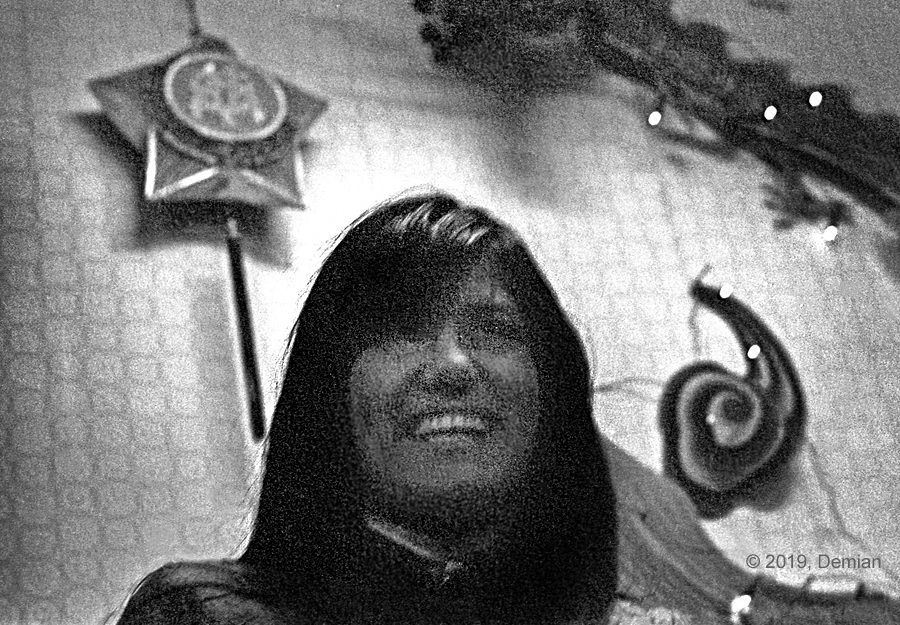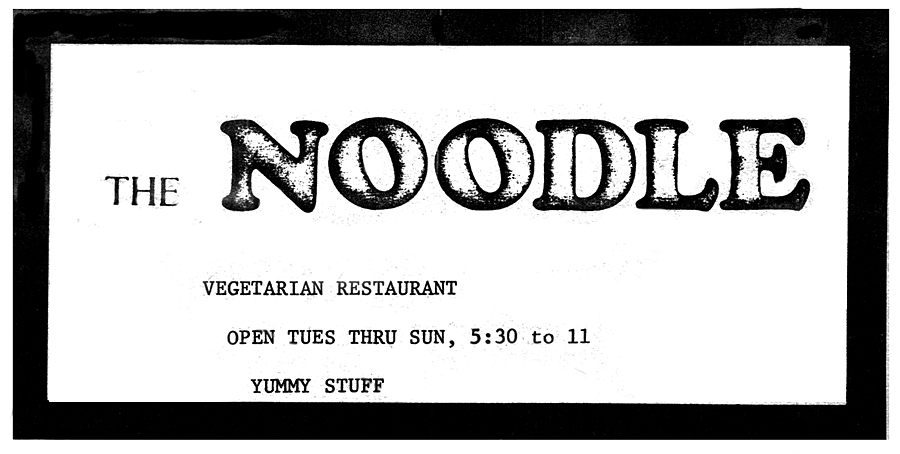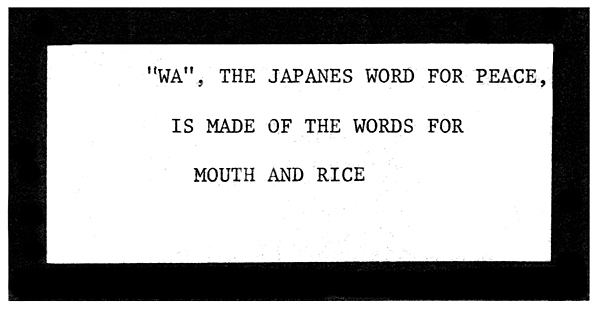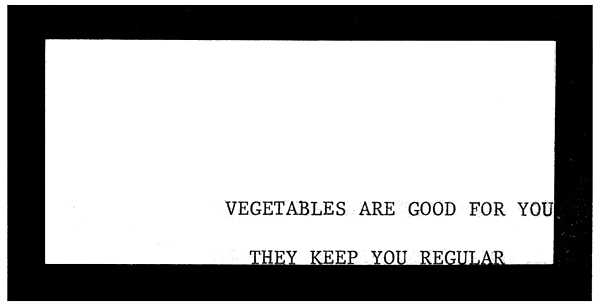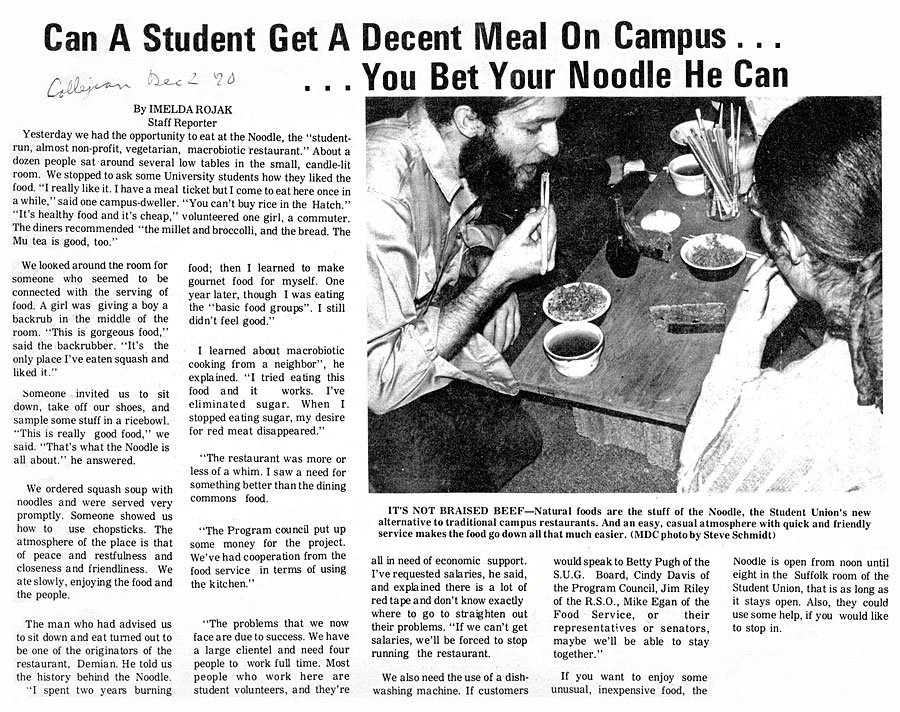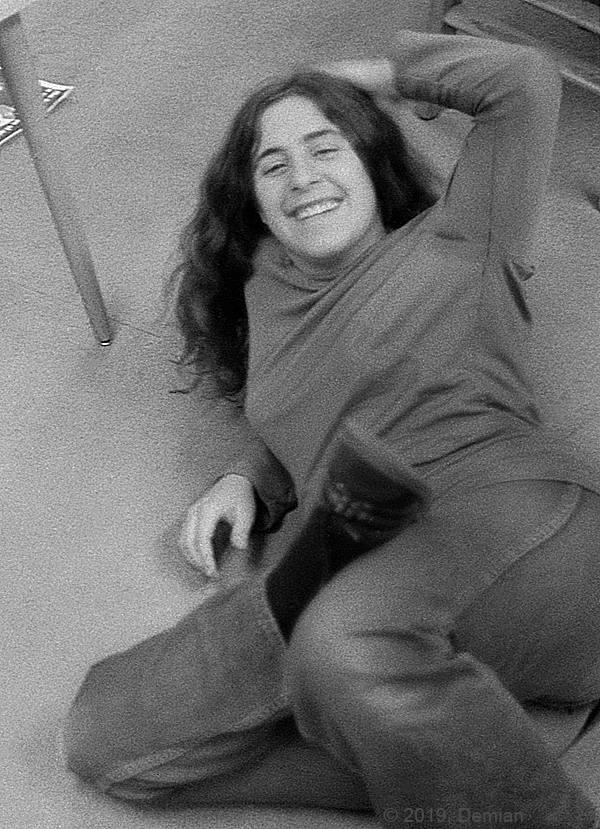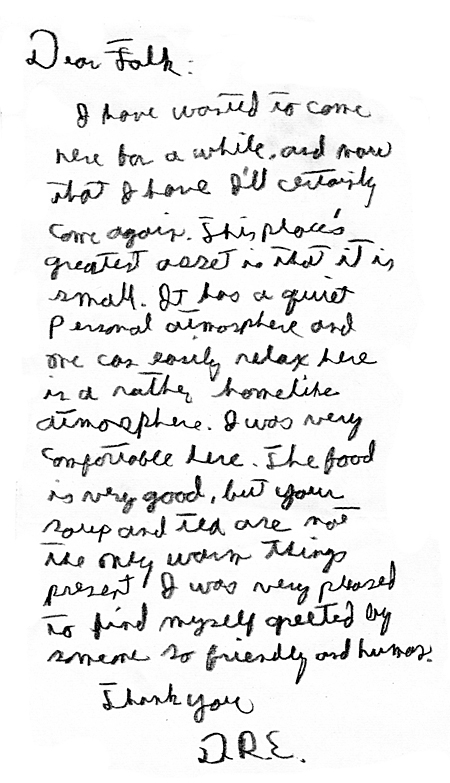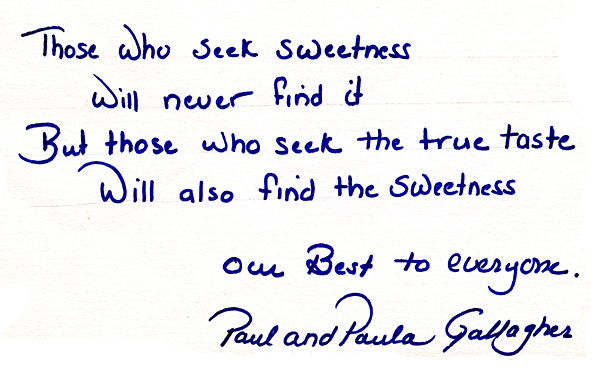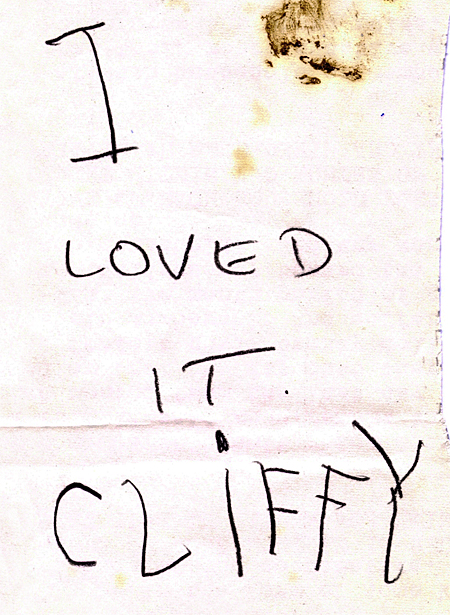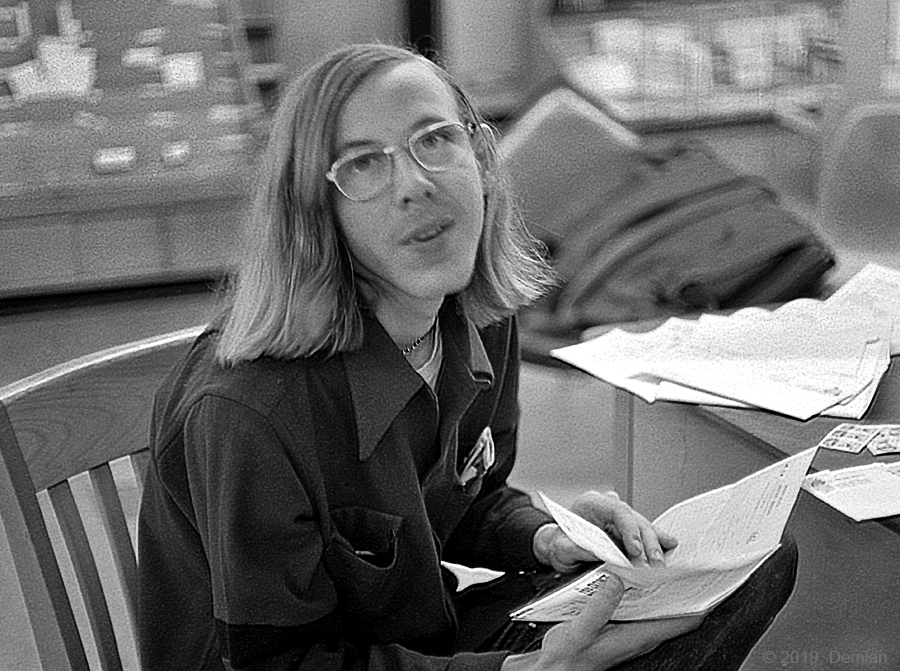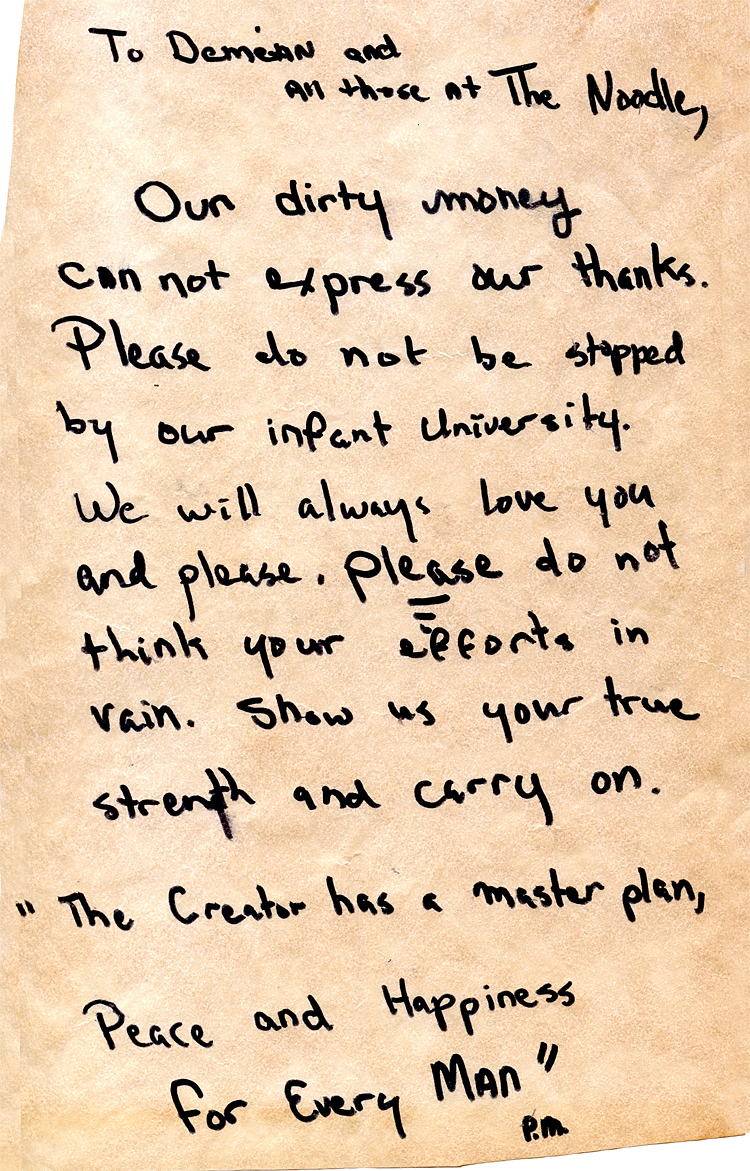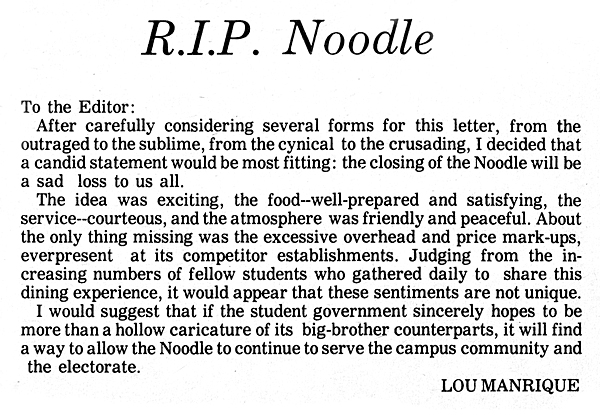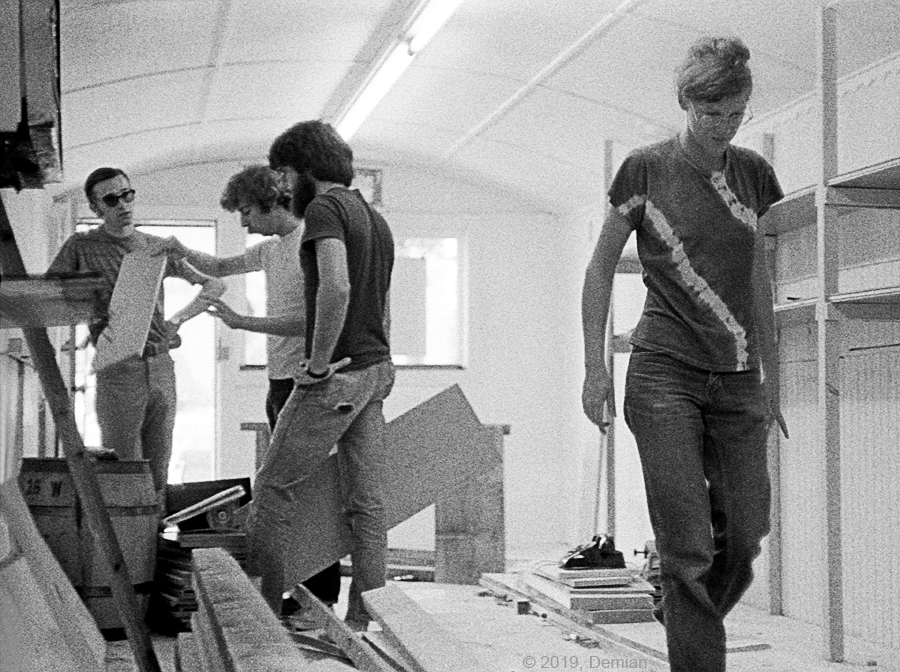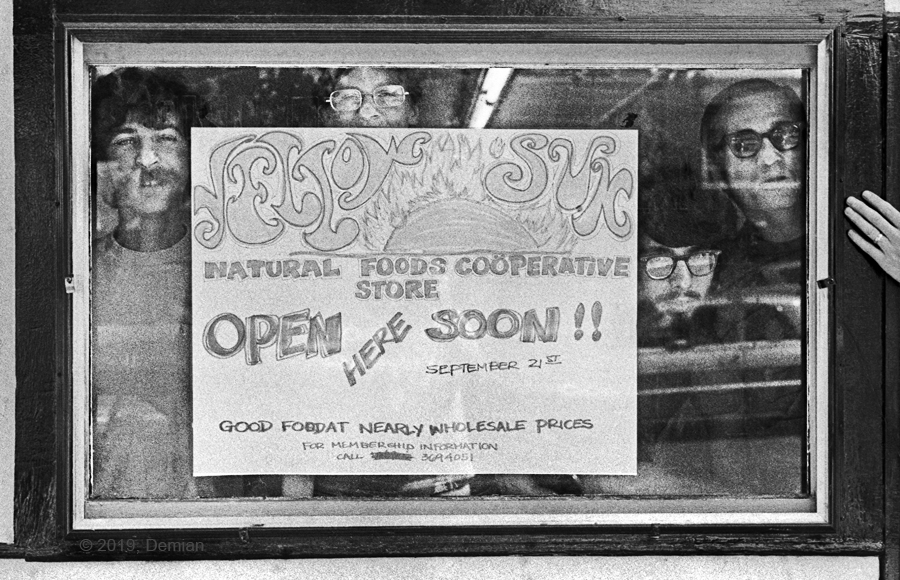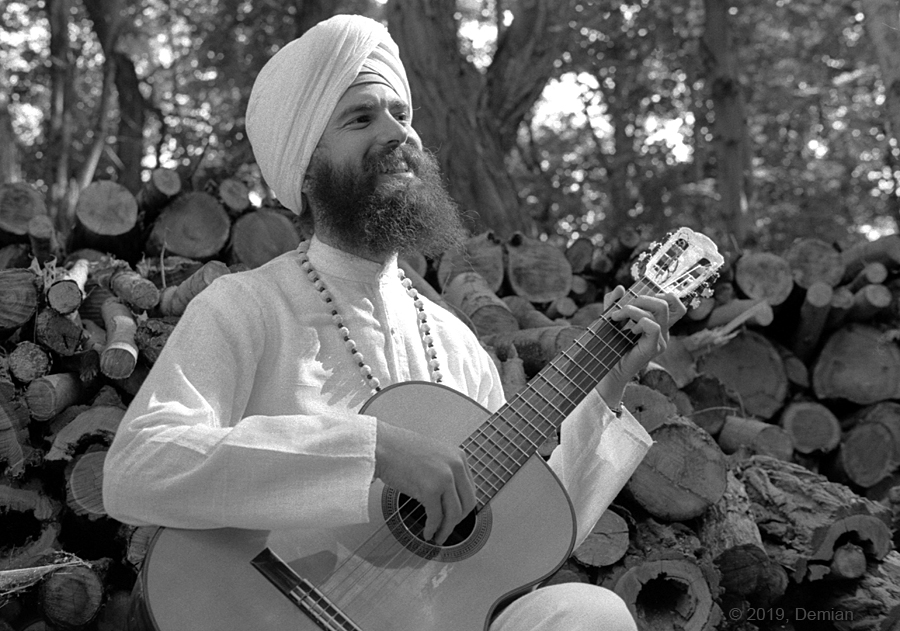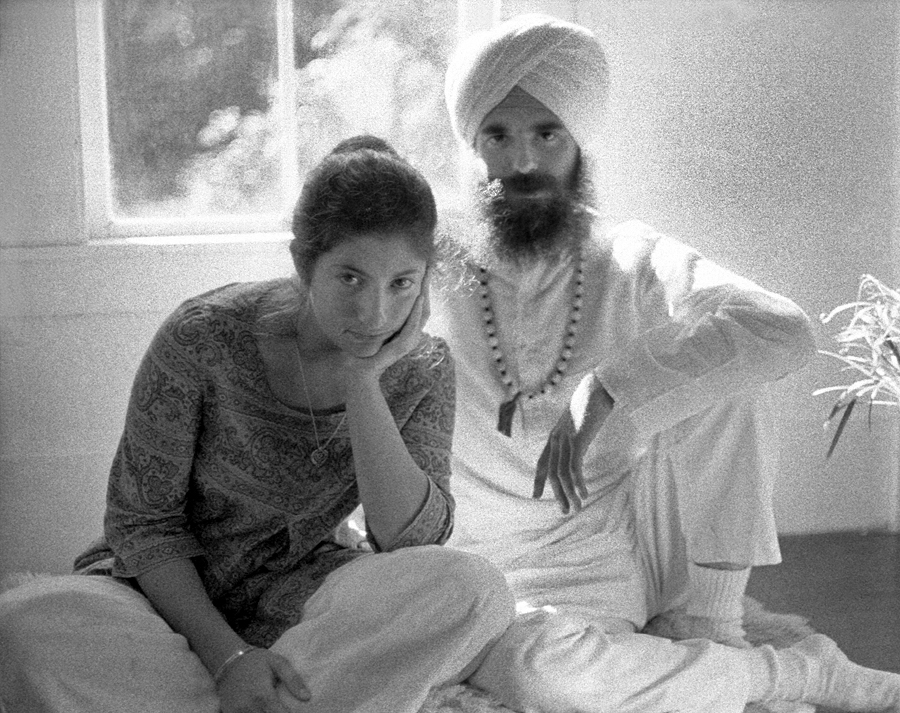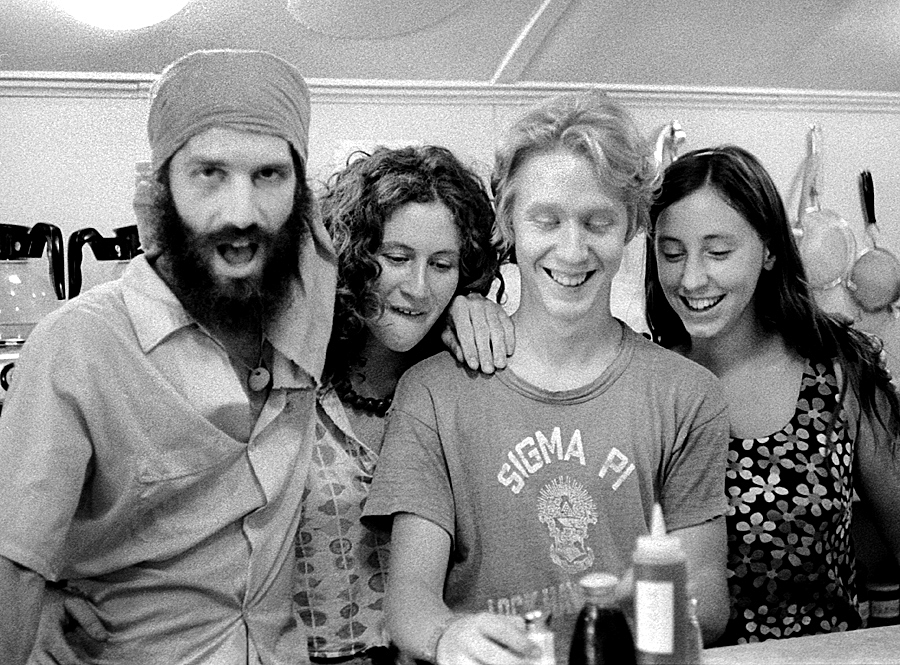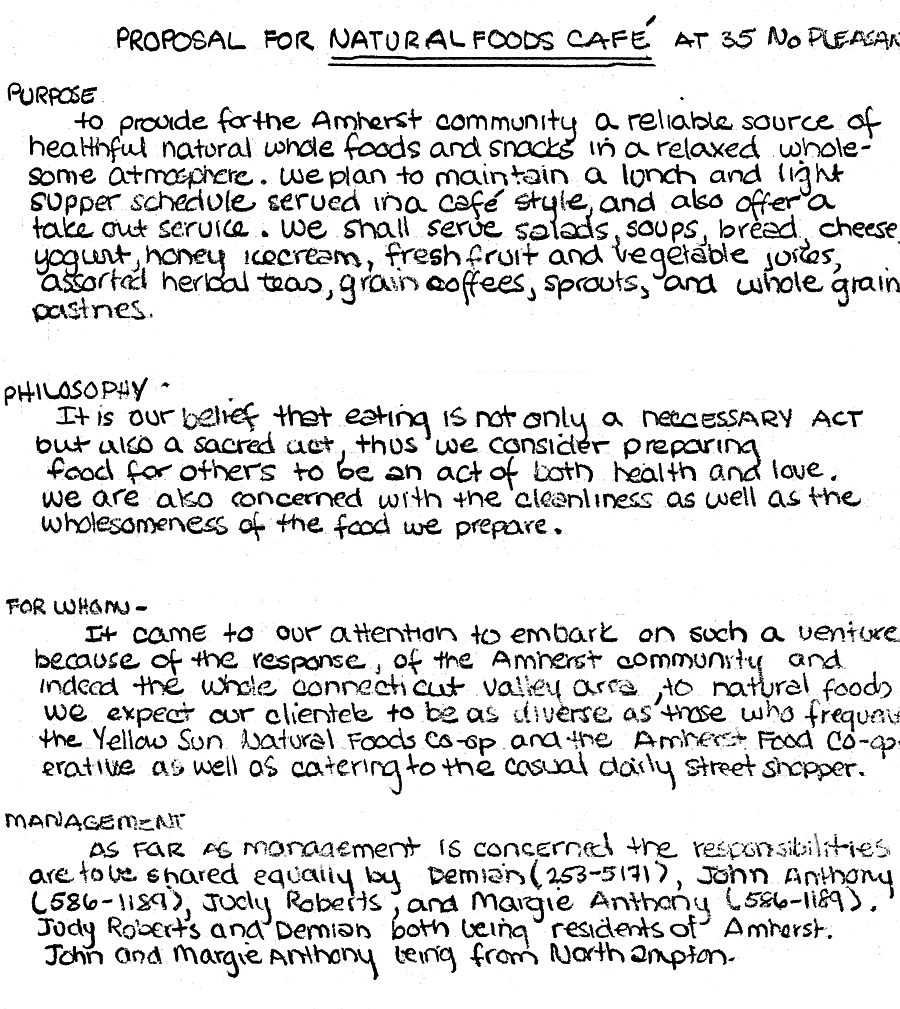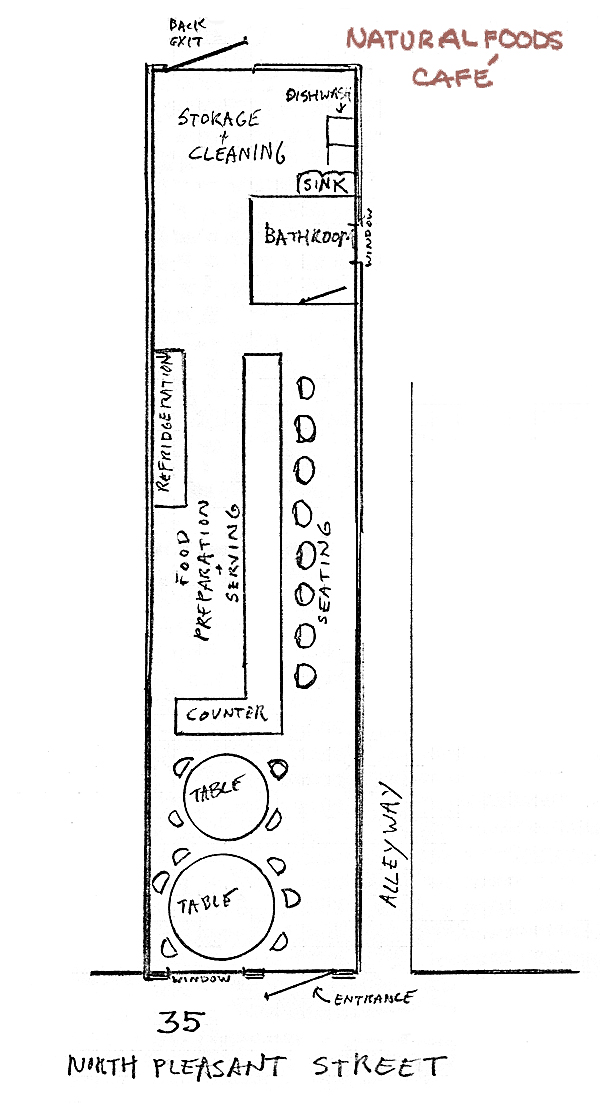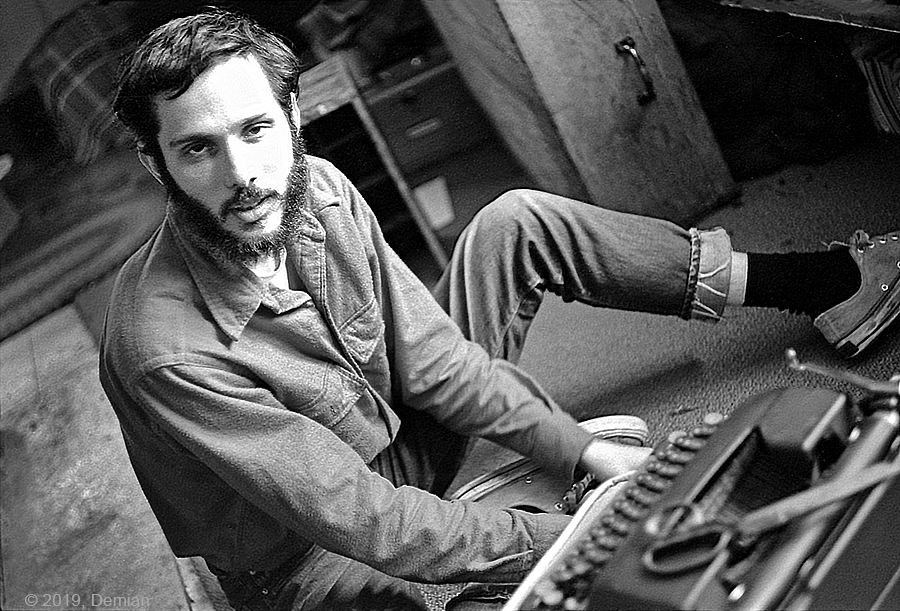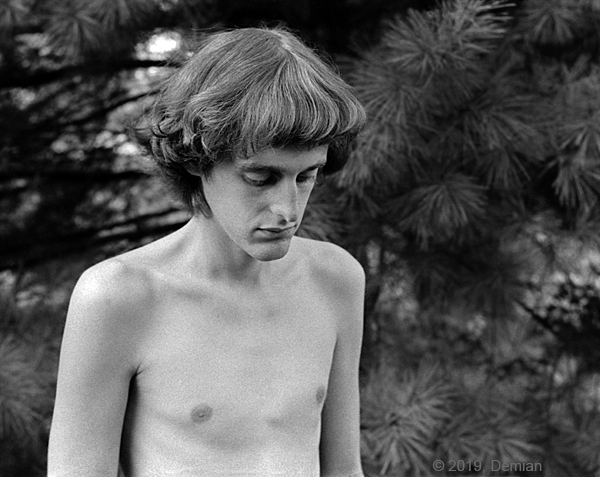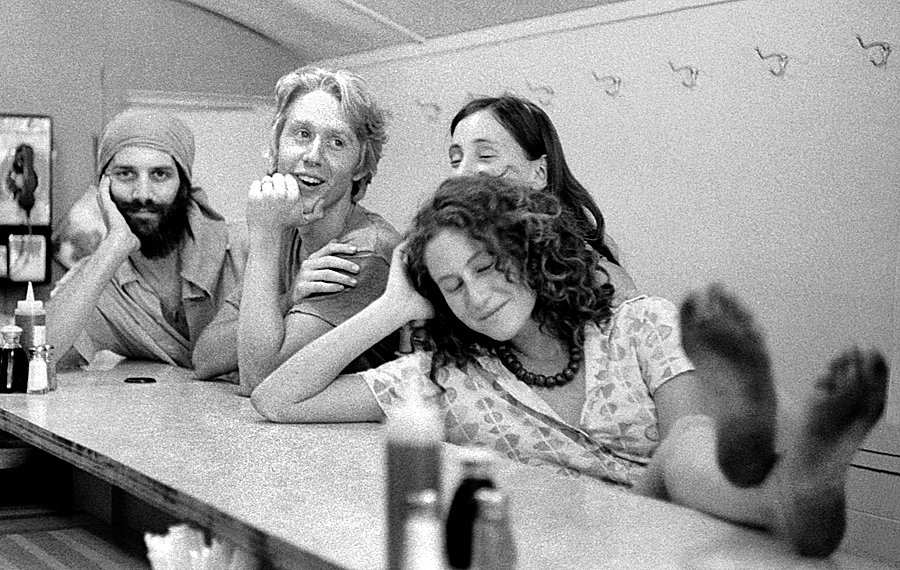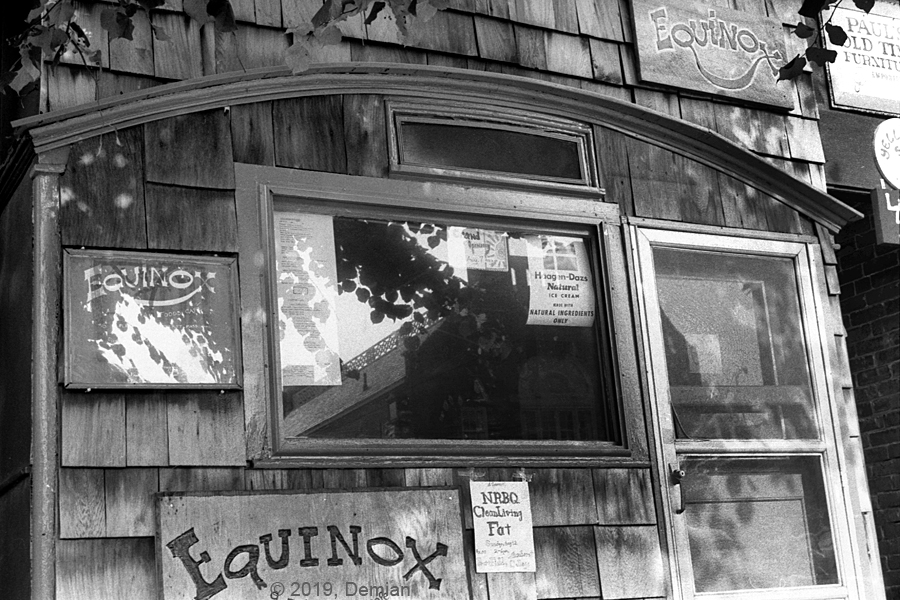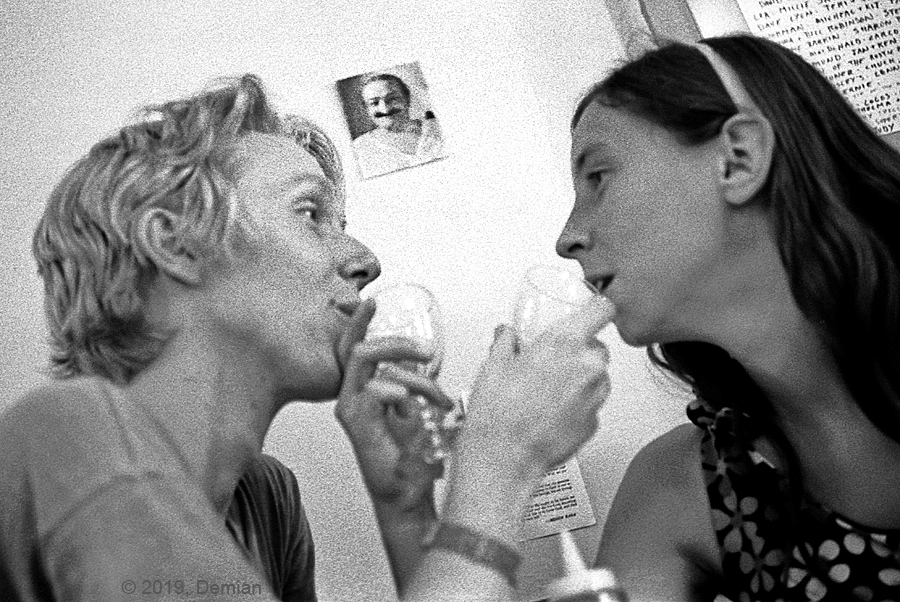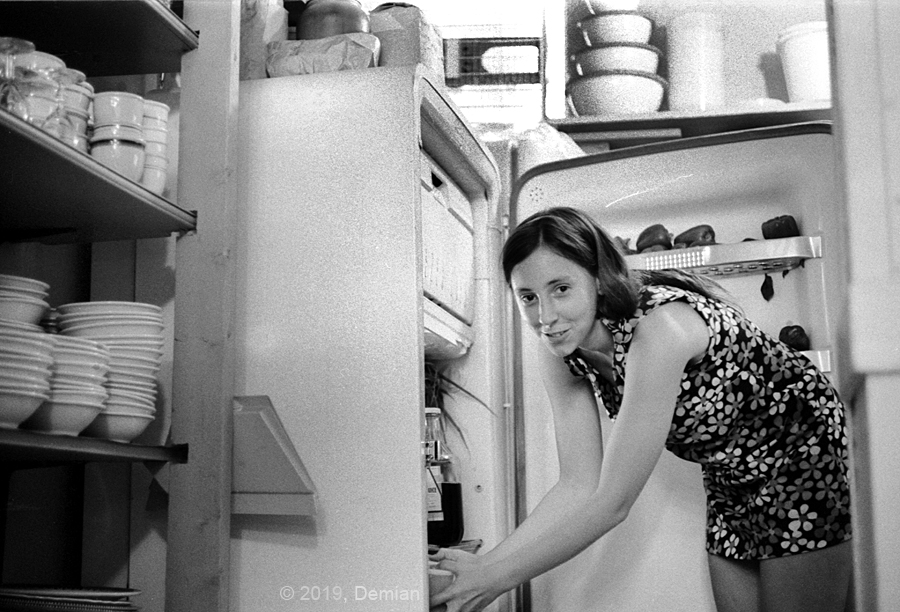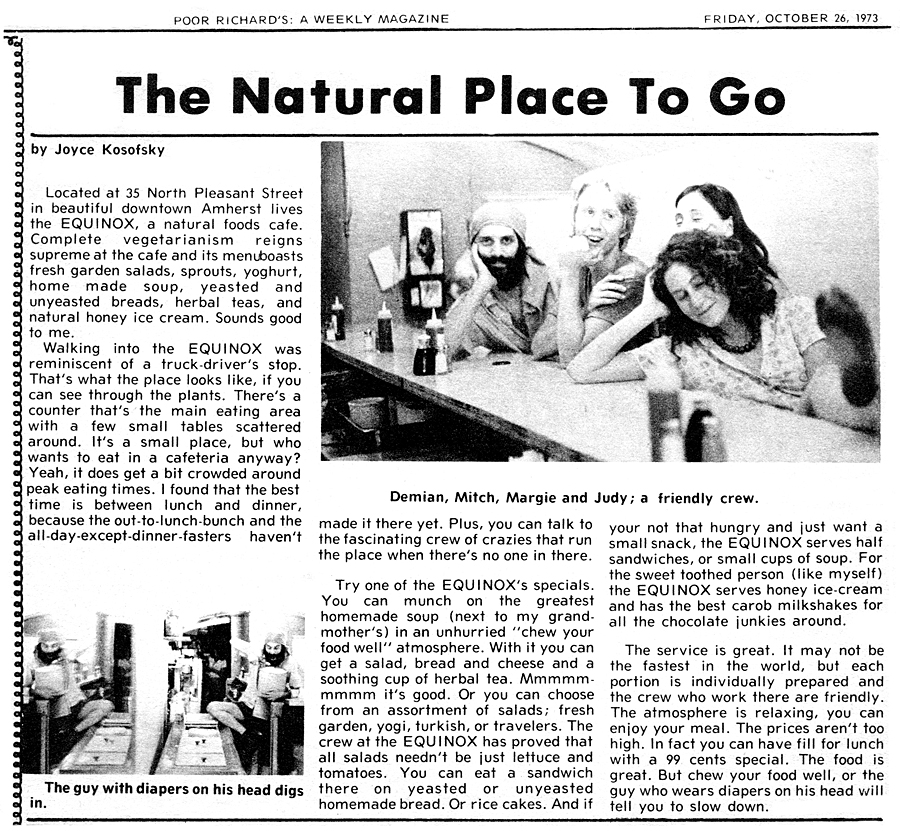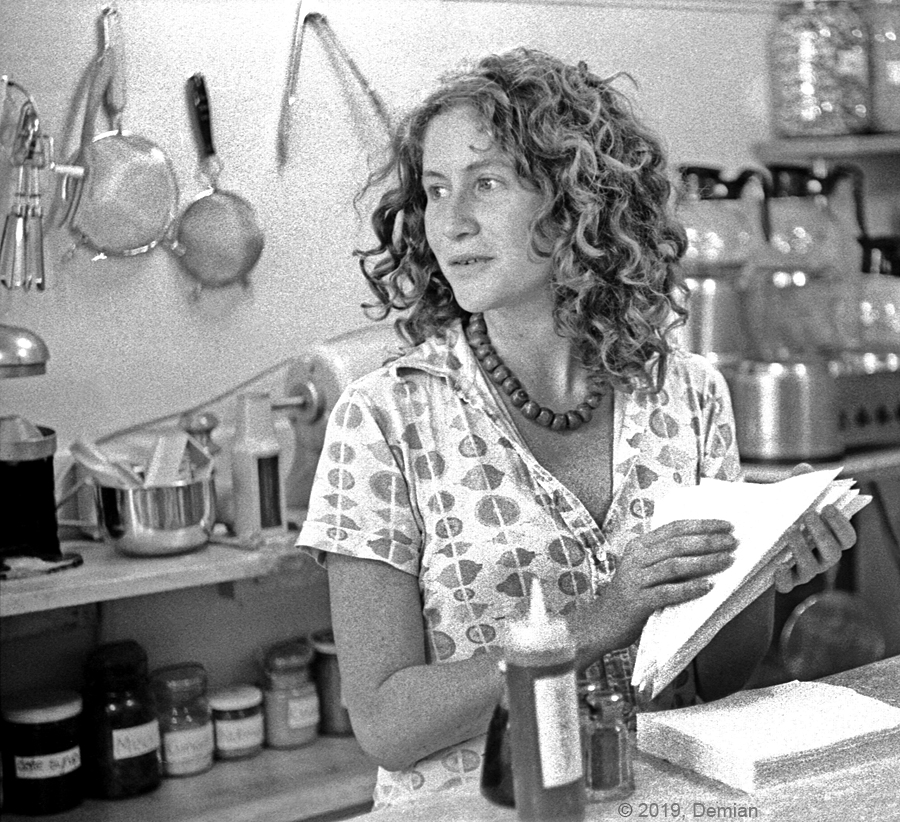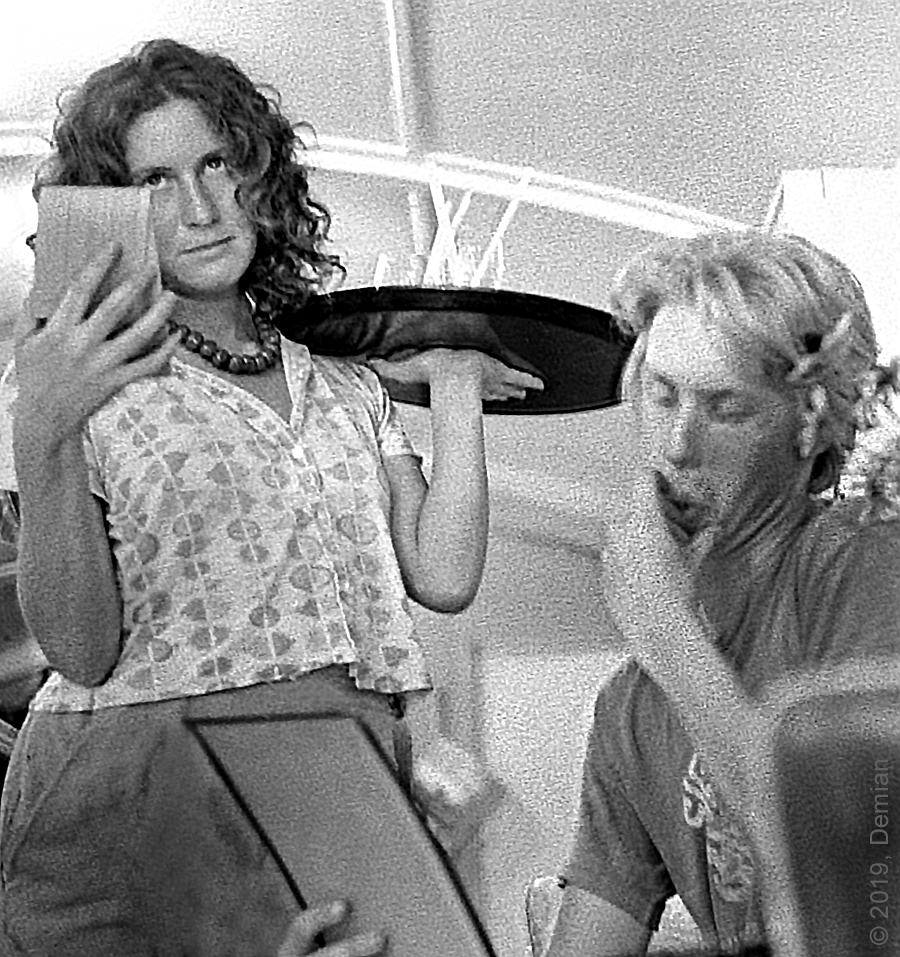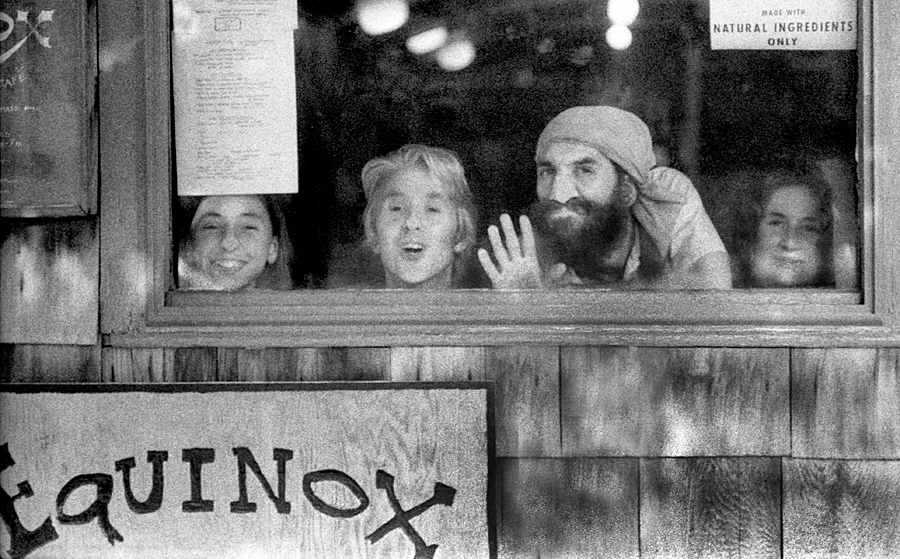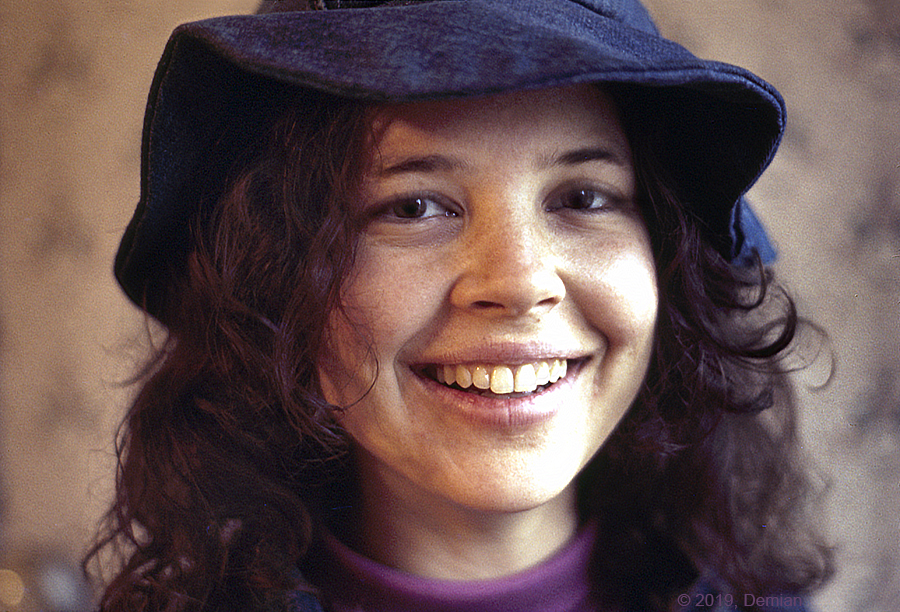
|
presentations that affirm self-esteem and social equality.
.
| MEDIA: Movies: Sweet Corn Vimeo YouTube Photos/Illos: Image Galleries Writings: Articles |
| SERVICES: Digital Production Image Retouch Puppets Script Doctor Shop |
| RESUMES: Directing Writing Visual Acting Web Programming About Sweet Corn About Demian |
| Noodle & Equinox |
|
- or - How I became Vegan, Created a Vegan Restaurant, and a Vegetarian Café, and Lived to Tell About it by Demian © May 5, 2019, Demian |
Boston Beginnings My parents ate broadly, including a lot of dairy, sugar, oil, meat, as well as processed, and over-cooked foods. There weren’t many models of eating for health, protecting animals, or food-based caring for the earth. In 1967, after graduating with a BFA in painting, I’d rented a cheap, third floor apartment, that I think was on Hillside Street, and off of Parker Hill Ave. or Hillside St. In any event, it was up the hill from Huntington Ave. This was on Boston’s Parker Hill, which was often called “Mission Hill,” because of the prominent Mission Church presence. It was part of the Roxbury district, and largely known as a slum. Fellow artist, Stan Wilczynski, was my housemate, and more than best friend. He was raised, with many siblings, on a farm in Ludlow, Massachusetts. They never bothered to lock their home door. I was raised in the Boston suburbs of Brookline and Newtonville, and was taught that doors required to be secure. Stan convinced me that locking up was unnecessary.
Our Roxbury landlady once paid us a surprise visit. As she walked in, and surveyed the place, she pronounced: “Cute and Bohemian.” Perhaps, she said this due to our paintings and photos hanging on all the walls. Or maybe she considered us to be cute. More likely, her declaration was based upon seeing that no two chairs matched, and we had used a discarded, large, empty wire spool, set on end, to serve as our kitchen table. At that time, it was still legal to abscond with garbage-day furniture cast-offs. One of the joys of living at this Roxbury location was the presence of a skinny teenager, who had an amazing singing voice. She used to vocalize from the back porch of a neighboring building. The buildings were positioned to effect an echo. Her singing was a joy to hear. One day, she timidly knocked on the door, and asked to borrow my Miriam Makeba album (her debut album released in 1960). While shy, I thought she had guts to ask strange, white, Bohemian (possibly cute) guys for a favor. She was black, and she called herself Donna. Another blessing occurred at our apartment, when Gretchen Priest and Michael Rayson, knocked on our door to see if the flat below us was available. The two of them were friends, and devotees of Kirpal Singh, their spiritual master. After they’d moved in, as a neighborly gesture, I brought them some sugary cookies and cake, which they politely refused. I ran upstairs and hunted up some other food. They refused it. I ran up, and down again, with another item from our larder, which got another sweet “No thank you.”
“Well,” I finally asked — somewhat out of breath — “what do you eat?” They were committed to this food / philosophy, yin-yang thing called Macrobiotics, as well as being vegan. The term “vegan” was invented by Donald Watson, founder of the Vegan Society in England, in 1944, as a way of indicating those vegetarians who didn’t eat dairy products. Later, I attended several lectures on Macrobiotics by Michio Kushi. Essentially, Macrobiotics is the understanding that food is a form of medicine, which heals and restores. Food has the power to nourish our bodies, the land, as well as society. Within a week of Gretchen and Michael moving in, I awoke to find popcorn in my slippers, and a trail of popcorn leading to the wobbly back porch, from which hung a piece of yarn, with a note card clipped at the end. I hauled up the yarn, and read the invitation for Stan and me to come to a “snack” that Gretchen was preparing for us that afternoon.
Young artists never turn down free snacks. I’d never had as good a meal as at that “snack.” Never since have I experienced a cook as excellent as Gretchen. I asked her how she got this good, and she told me that she meditates while cooking.
Gretchen and Michael taught me about food balance, and to consider food as medicine. Besides teaching me about Macrobiotics, and veganism, they instructed my first experience of meditation. I asked Michael how he got into our apartment, when he installed the popcorn trail invite. He said he’d climbed up the rickety, back porch.
I told him that if he ever wanted to sneak in another snack invitation, to please not endanger his life, and to enter from the hallway stairs instead of the porch; we never lock the front door. NYC Food It took some months before I began to change my diet. It was prompted, partly, by the lack of quality foods in New York City. The good stuff – fresher, organically grown – was located at the natural food stores, and vegan restaurants. I’d moved to NYC on advice of my friend, Harris Barron, who was an artist and professor at Mass. College of Art. His idea was for me to get connected to professionals in the photography and movie making business. While I spent more than a year and a half in the City, a real, money-making career in photography, or movie making, didn’t manifest.
While in New York City, I got introduced to T’ai Chi by students of Chang Man-Ching, yoga from a travel Indian swami, theater with Carolee Schneeman, and dance with Yvonne Rainer.
I free-lanced photography for dancers, theater productions, candid portraits of business people at the Mercantile Exchange. Also, I made loads of shots of my friends, and landscapes of New York City, in the lower end of the island. For a more regular income, I was a foreman in a cold storage warehouse for a butter re-packaging operation. The high-quality butter came mixed with vanilla or cocoa, wrapped and frozen. We thawed, unwrapped, and placed 30 pounds of it into a poly bag for use by ice cream makers. At various times, I worked for a florist and assisted with constructing enormous planters for the General Motors building lobby uptown. I was also an assistant cook at the Macrobiotically influenced restaurants called the Cauldron (vegan), and the I-Chi (vegan and shrimp). And for the Samsara (vegan), I baked rice breads. I was also a puppeteer and voices for the traveling Nicolo Marionette Company, and discovered how difficult it was to live on the road, and how hard it was to locate good vegan meals while traveling. Manhattan surprised me by how the ethnic, racial, and social groups were isolated from each other. I expected a “melting pot.” Every group had their own neighborhoods, and rarely crossed the invisible street barriers. The first residence I had was on lower West 16th St., and mostly Hispanic, brown, and black. People often hung out on the steps (which they called a stoop), and it felt safer with all the extra eyes on the street. We did, however, need to lock the apartment door, with a door nob lock, bolt lock with chain, and a “Police” lock; a sort of sliding crowbar. All that didn’t stop two men from attempting to break into the place. Toward the end of 1968, I subleased a floor in a big warehouse, south of Canal on Leonard Street, from a sculptor and painter of rather large canvases, named Lewis Stein. Living on another floor was a man named Alton Pickens, who was also an artist or writer. Don’t remember him showing me any of his work. The warehouse had cold and cold, running rusty water. It was a heat-toilet-bathtub-and-kitchen-free joint. On a lark, I brought home a bar of the butter product I packaged. Because my residence warehouse space was unheated, there was no danger of it going bad. Since I didn’t actually want to eat the product, I was happy to see a small mouse had taken residence near the butter, and had happily nibbled its way through the foil wrapper. The room was cavernous, and it was good to have such a sweet companion, who was as quiet as a mouse. In November 68, I move to a storefront at 30 Watts Street, a couple blocks north of Canal. I built a loft to sleep in, and ran my “Closet Movie Theater.” In case you’re wondering, the name referred to the size of the space. I projected 16 and 8 mm current “underground,” experimental, and some of my own artistic movie shorts. Besides having a really sweet super, one of the best things about the storefront was that it had actual heat (during the daytime), and a toilet. While there was a snap lock on the street level front door, even locked, the door would open if you leaned on it. So, I lived in yet another in-city abode that also was, technically, unlocked.
What eventually got to me about New York — besides the scarcity of decent affordable housing, and billions of cockroaches — was the constant city noise. Even in central park, there was no escape from traffic, sirens, CD players, and radios. Twenty-four/seven mountains of noises. Also, while living in NYC, I witnessed a garbage strike, a bus strike, a cabbie strike, and another garbage strike, the last of which provided second-story-high garbage bag mountains of smells. The Invite Jeannie Manzelli, jewelry maker and artist, who was a friend from Mass. Art, invited me to visit her and her boyfriend Mark Pollen. I could house sit for their Amherst, Mass. residence. She knew I was unhappy living in the big city, and Amherst was laid back; surrounded by meadows, forests, and farmlands.
Mark was a grad student at the U. Mass. School of Education, and he invited me to a class. I liked the area and the class so much, that I applied as a graduate student, and began work on my masters and doctorate. During that time, I taught photography, movie making, produced and hosted public affairs radio programs, acted in plays and on radio, and ran 130 theater workshops for non-performers. By 1970, I was vegetarian. I noticed that I no longer had a sore throat through most of the winter, and had fewer colds. There were books and articles that talked about the damage done to the environment when meat is chosen over vegetables, such as how animals, raised for food production, are fed more than half of all the world’s crops. Also, it was clear that there were medical, and environmental, polluting dangers from factory farms. There was more at stake than just my own health. There was a whole community, an entire country, and the world itself, that had a vested interest in nutritional fitness and well being. All of which began for me by making a personal choice, for myself, to treat my body like a temple, a holy space.
By the end of 1972, I was fully vegan, and remained so thereafter. Amherst Soon after moving to Amherst, I formed a vegan-based household, primarily consisting of college students. There were five major colleges in the area. While tenants came and went, some returned repeatedly. Over seven years, in four different locations, I had a total of 24 different housemates. It made no sense to constantly be making keys. Once again I lived in a lock-free household. And that felt great. The household became well-known, and, sometimes, strangers would drop by to ask about vegan food, or if there was a vacancy. However, most of the time, the drop ins were friends, and they knew, even when none of us were home, that there was no door key; they were welcome to wait inside. One of the joys for me was after working, or running errands, to find friends waiting, or napping. I liked to cook, and, when away from moms kitchen, I was always cooking. Among my food-affiliated ancestors, besides the mostly female homemakers, there were two grocers, a bread maker, and my grandfather was an independent donut shop owner. Maybe there’s a gene for food making. There’s a very similar process between cooking and photo creation, both endeavors of which I am fond. Both require chemistry mixed, over time, with temperature control. Only real difference is that one makes something yummy, while the other makes art. The concept of organically grown food was just beginning to spread. While there was no organic and natural food stores locally, such items could be ordered, in bulk, from Walnut Acres in Penns Creek, Pennsylvania, and rice from Deaf Smith County, Texas. I joined an organic, bulk food purchasing group, which got our foodstuffs and delivery expenses at a discount. At one point, Eli Schuman, my friend and a media maker, drove me, in his teeny tiny car, to Walnut Acres for one of the bulk orders. The store and farm were founded in 1946 by organic pioneers Paul and Betty Keene. They went out of business in the summer of 2000. The brand was bought by various venture capitalists, and by June 17, 2003, was owned by Hain Celestial Group.
Meanwhile, back in the early 70s, there were few natural, or organically grown, food stores. And, certainly, no vegan, natural food restaurants. It occurred to me that one of the best ways to excite people about dietary concerns was to create a restaurant that featured vegan, natural foods. The Noodle
I had no cash to start a restaurant, so I proposed a vegan lunch and supper experiment – called The Noodle – to the University of Mass. Student Council. They loved the plan, which included an all volunteer staff, with a menu costing far below any restaurant, including the campus food services.
Here are a few of the ads I placed in the Daily Collegian student newspaper:
From my diary, November 6 , 1970: Noodle Restaurant’s opening day. Real hard work. In spite of chaos, duplicated efforts, mismanagement, ill-defined jobs, and too many helping hands, there was tremendous cooperation and very high feelings. The real star was everyone; their hard, selfless work, and lots of smiles. We had many customers. I knew almost all them, and got lots of hugs as I played host, and served tea. My diary, November 7 , 1970: Noodle organization improved; many thanks to Callie Farr. I made a great miso with leeks soup, and pear whip dessert, and improved the salad. By the end of the day, I got too tired to stand up. Cleaned up early, and closed on time.
Initially, the Noodle was supposed to run only three weeks. We served about 150 patrons a day. It was so popular, the Council asked us to keep going.
The article above mentions our main massage instigator, Myrna Schwartz. She would suddenly appear at the dining room doorway, feet apart, fists on her hips with arms akimbo, and loudly announce: “Who wants a massage?”
Since the floor was covered by several layers of carpeting, with low tables and only pillows, rather than chairs, the usual response was that at least three patrons would put down their food bowls, and flop to their stomachs.
Such was the informality. There was no printed menu, we wrote up the day’s offerings on a chalk board. This was, after all, on school grounds.
Amazingly, none of our all-volunteer staff volunteered to wash the utensils, pots and dishes. So, after working all day, I had to do it. This brought me wisdom about human nature, as well as dishpan hands. Besides denying us the dishwashing machine and the Fry-o-lator, University Food Services ignored my requested for salaries for the volunteers. Instead, I got a stinky boatload of “red tape.” After running the Noodle for two months, I got mighty frustrated dealing with the Food Services recalcitrance, and some of the personnel. Maybe it was time to hang up my apron and hand lotion.
After intensive consultation with the Noodle crew, we decided to end the Noodle experiment. For the last week of operations, we offered free food and suggested donations to pay the staff. The number of patrons went from 150 per day to 300.
The Hare Krishna Vegetarian House Guests I’d secured renting a house at 389 Amity St., Amherst, MA, in May 1971. On August 9, these two guys ask if they can stay at my house for part of the summer. They’re vegetarian, wear saffron colored robes, have drums and finger cymbals, and beg for a living. I figure that letting them live with us was likely good karma. Karuna (means compassion) is in his 30s, and his friend is in his 20s. I forget the younger man’s name; let’s just call him Chris. Both are followers of A.C. Bhaktivedanta Swami Prabhupada. They endlessly repeat this famous Hindu mantra of God’s holy names, a lot. Hare Krsna Hare KrsnaFollowers say that elevation and joy are to be derived from chanting God’s holy names. To be a member of the Hare Krishnas, one had to follow the four regulative principles; strict abstention from intoxicants (no cannabis, coffee, or tea), no meat eating (not eating fish or eggs), no gambling, and no illicit sex. So, among other precepts, being vegetarian is built into this spiritual path. While their spiritual endeavors where notable, the everyday details sometimes got out of hand. For instance, one day Karuna made peppered Ghee, a clarified butter process. He had turned up the stove heat so high, that the whole house filled with billows of eye-burning smoke. I yelled over my shoulder to him, “Karuna, turn off the heat,” while running through the house opening all doors and windows. He insisted that this was the correct way to make Ghee. I suggested that “clarified” meant to melt, not to set on fire. On another day, the guys carried honey on flat bread from the kitchen, through my bedroom, to the back room where they slept. A dribble of a honey trail became evident on the cement floor. They wiped it up, however, it was already too late. Soon, the honey trail was replaced by a line of ants, which show up, right on cue, every summer, during the next four years that I lived on Amity. On August 27, the chanting duo departed our household. Karuna left the Amherst area. Chris found a local lady sweetheart, and exchanged his yellow robe for a T-shirt and jeans. As a parting gift, they give me a copy of the “Bhagavad Gita,” and a book about Krishna. Both books have reproductions of many detailed, colorful, holy paintings, they thought I’d appreciate, as a visual artist.
To this day, I often silently chant the “Hare Krsna” mantra before eating. And never carry honey into the bedroom. Yellow Sun Natural Foods Coop
Not long after the last pasta was slurped, many Noodle volunteers where highly motivated to form the Yellow Sun Natural Foods Coop, a membership discount store for organic and bulk foods, in Amherst town center. The following photos were requested by “Pulp,” the Pioneer Valley alternative newspaper.
Once the store was put in working order, I clerked at the Yellow Sun, was store manager one summer, ground flour in a coop member’s barn, and edited the Coop monthly newsletter for two years.
Kundalini Yoga Vegetarians During the early 70s, I was friends with Stephen Josephs, a musician and student at the University. On July 13, 1971, Steve had helped me transport the slide-tape version of my puppet show, “UBU,” for a performance. While slightly detached, he seemed more relaxed and alert, than usual. Later that night, I went into the local coffeehouse, and found Steve there performing a set with his guitar. Didn’t expect to see him so soon. After he finished, I went to him and said, “You’re different.” He smiled and said he was glad it showed. He’d been at a Kundalini retreat, in Colorado, with Yogi Bhajan. Nothing but chanting, postures, and meditation, from 5 am to 10 pm, daily.
Bhajan founded 3HO (Healthy Happy Holy Organization), which teaches yoga and meditation, grounded in a philosophy of compassion and kindness. The yogi had gifted him some ego-shattering experiences. It seemed to me that Steve had found a wonderful lover, and that lover was himself. Subsequently, Steve changed his name to Gurushabd Singh, and formed the Guru Ram Das Ashram, in 1972, located in Montague, Mass. Affiliated with the 3HO and the Sikh Dharma Brotherhood, the ashram provided instruction in Kundalini Yoga and Tantric meditation. Two former tenants at my household joined the ashram, and I knew several other acquaintances who lived there as well.
At the ashram, they practiced meditation, postures, and had a vegetarian diet. I asked about the amount of dairy in the diet, which I thought excessive. It was explained to me that this was to counter the drying effect of the potent “Breath of Fire,” Kundalini asanas they frequently practiced.
Over the course of a couple of years, I witnessed several who practiced at the ashram, gain much focus and improved health. The Equinox The Noodle Restaurant had proved such a success, that, sometime before June 1973, I began a search for partners to open a vegan restaurant. Mitch and Margie Anthony answering the advertisements I placed in the Amherst Record. They, too, wanted to create a natural foods restaurant.
Because my partners wanted to include dairy on the menu, this meant a compromise, however, they were such fine people, we began planning right away. A short while later, Judy Roberts, who I knew through mutual friends, joined our efforts. We were able to rent the same store — at 35 North Pleasant St., Amherst — that was previously the “Um Tut Sut” bookstore, and before that was the Yellow Sun Natural Food Coop. A place that previously offered healthy edibles, and fed the mind with poetry and such, was now us, providing healthy lunches and suppers. A tradition of good vibes at one handy location.
I was encouraged because of all the support, advice, and physical help we received, in order to make the Café come to life. While we were shelf-building, painting, and so on, friends would frequently drop in to chat or lend a hand.
My head wrap, mentioned in the above newspaper article, was not actually a diaper. But it was pink.
We divided the work day with Judy and me for the lunch crowd, and Margie and Mitch for the suppers; with a half-an-hour schedule overlap. At one point, Judy wanted to offer breakfasts, and did that on her own. Ultimately, I think there weren’t enough customers for that early in the day. When I complained about washing dishes, Mitch said he’d do it all, as he used the time to contemplate stuff.
One of the many sweet experiences at the Equinox included the occasional times we had late night live music events. This was usually provided by an acoustic guitar player/singer/songwriter/wandering minstrel/college student. The Café would be packed (not too hard to do), and the camaraderie was palpable.
I continued working at the Café for about a year. The hours and the routines got to me. Once again, it was time for me to hang up the apron, as well as the pink, head schmata. By this time, all restaurant debts had been paid, and Judy, Margie and Mitch continued the operation. They hired a dishwasher, and eventually other staff. After some time, the hired workers bought the Café, and ran it as a collective. One of the workers was Celia Ross, who was another housemate of mine.
Eventually, the collective sold the Café to a commercial company, which kept the Equinox name, got a much bigger, classier location up the street, and threw out the vegan/vegetarian menu. They hired Celia to cook. Postscript By now it’s probably clear that this article is more than just a list of reasons why I became vegan. It’s an autobiography, a photo album of my friends and intimates, it indicates my interests, as well as the accidents that help make up a life that, in some ways, has tried to remove the locks, and leave the doors open.
| ||||||||||||||||||||||||||||||||||||||||||||||||||||||
|
Sweet Corn Productions || 206-935-1206 || demian@buddybuddy.com sweetcornmedia.com || Seattle, WA || Founded 1971 All contents © 2023, Demian, Sweet Corn Productions |
